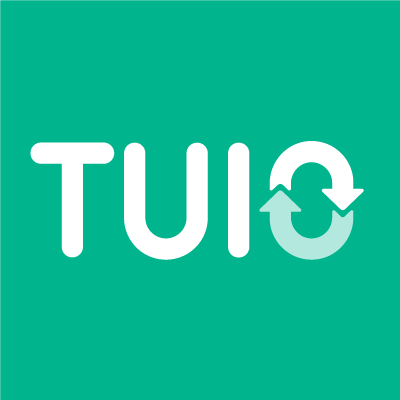When you work in the administration of a school, enrollment might be one of your biggest concerns. The number of new students must balance out the students who finish their education, or you risk losing out on crucial funding opportunities. If you want to increase enrollment or engagement with your school, a referral program can be an excellent tool to help you achieve these goals. Read this guide to learn how to start a referral program for schools with tips to implement a program that suits your school and your community.
Introduction to School Referral Programs
Referral programs have been an important part of business for decades. Someone refers you to a company and when you sign up for service, both of you get a perk. It’s not surprising that referral incentives can be an effective tool for schools as well. If you charge tuition or other fees for your educational programs, you may be able to benefit from implementing a new student referral program at your school.
Referral programs offer a variety of benefits for your school, your students and parents, and the community at large. These advantages include:
- Getting the word out: If you are trying to increase brand awareness or your stake in the community, referrals can get people talking. Although not every referral will lead to a new student, you can count on the program to persuade more people to take a look.
- Increasing positive brand awareness: To increase enrollment, you need to build an advantageous view of your school’s brand. A referred family is more likely to have a positive opinion of your school through the friend or family member who referred them.
- Reaching underserved populations: Even if your marketing plan is top-notch, you may still have families in your target demographic who do not know about the benefits of your school. Referral programs may help you reach them.
- Increasing retention: The goal of your referral program might focus on customer acquisition and enrollment, but you can get the benefit of increased retention as well. Families who feel like their participation in the school community is valued are more likely to stick with the school long term.
Tools like TUIO give you a sleek tuition management system for handling referrals, allowing your families to see the perks and incentives they get for each referral.
Identifying Key Stakeholders and Target Personas
If you want your school referral program to be a success, you’re going to need to find the movers and shakers in your community. You may have a small team or a large group of people who can help you take your referrals to the next level. These people might include:
- Administrators in charge of implementing and maintaining the program
- Key decision-makers responsible for the school’s financial management
- School parents who are influential in the community
- Committed families, especially those who have been at the school for a long time
You will need all these people on board to make a referral program that addresses school needs and incentivizes families to participate.
Once you have a few people on your list, you can start targeting communication to get them thinking about the program. TUIO’s communication platform makes it easy to send messages to a select group or the entire community. Encourage your most active parents to give you opinions on the program and loop them in with other stakeholders before you launch. Emphasize their importance in building and maintaining a strong school community. They may give you key feedback that will increase effective use of the program.
Developing a Referral Program Framework
The best student referral program has an effective plan and framework. Without it, the program might fall flat. Make sure you complete these steps when building the framework for your referral program:
- Set Objectives: Gather key school stakeholders and discuss your most crucial needs. Objectives might include increasing brand awareness, positive branding, or customer acquisition.
- Define Goals: Once you have some objectives in place, set some achievable goals to go along with them. For example, you might set a goal for a certain number of new students, or a total number of positive messages about your school. Make sure that the goals serve the needs of the school, not just the success of the affiliate program.
- Create Measurables: With your goals, you should create some measurables to track your progress. You might want to track the number of mentions of your school on social media or the rate of new enrollment over a period of a few months.
- Implement a Double-Sided Referral Program: For a successful referral, you usually need a program that incentivizes people to sign up and rewards those who make referrals. Look for ways to make an offer that is easy to use and too good to pass up.
- Train Stakeholders on the Program: For maximum efficacy, make sure that administrators and your most active parents understand how the program works. That will make short work of educating the rest of the school population about its use and benefits.
- Integrate Software to Simplify the Process: Although you can certainly count things by hand, technology can make the effort seamless. Don’t hesitate to use tools that help you issue a referral link, monitor the mentions of your school on social media, or track the number of families who have earned rewards from the referral program.
- Track Your Success: Even if your program is so sleek it runs itself, you still need to see how it performs. Set deadlines to track your progress toward your goals and consider making tweaks if the program doesn’t meet your expectations.
With the TUIO enrollment management system there to provide you with key tracking tools, you will have everything you need to assess your progress.
Creating Effective Referral Incentives
If you want a successful program that continues to yield benefits for the school, participant families, and new students, you need a great referral incentive system. The best systems recognize that the referral reward ought to encourage both the referrer to act, and the referral family to affirm. This type of system is called a “double-sided” referral program because it includes benefits for everyone who participates. When planning out your referral incentives, consider the following:
- Tuition Discounts: Private school tuition might be one of the biggest expenses for families. Shaving off a portion of the cost for each successful referral or providing other forms of financial aid can incentivize families to talk to their friends and family members.
- School Credits: Credits for enrichment programming, such as sports gear or costumes for the high school play, can help families to manage costs involved with extracurricular school activities.
- Cash Rewards: Sometimes, the thrill of cash or a gift card outweighs even larger discounts on tuition and school programming. Consider allowing families to choose from a selection of incentives, such as gift cards to local stores or online shopping.
- Tiered Incentives: Some families may really dig into your program, sending you dozens of potential student referrals. Consider implementing tiered referral reward systems for your biggest supporters, so they can increase benefits along with their investment.
With TUIO’s tuition management system, you can customize the incentives and rewards for each referred student or family. Everyone can check the status of the referral and the adjustments for discounts and credits from a convenient mobile app.
Promoting Your School Referral Program
To get the maximum engagement with your student referral program, you will need to promote it effectively. If you needed to pass along an important message to your school community, how would you communicate it? You might send a text message, an email, or use your school communication app to make sure everyone gets the appropriate notification. As with other types of communications, referral marketing often requires multiple channels to ensure everyone knows about the program and how to use it. Consider using these channels to get out the message:
- Posts on social media
- Mentions in the weekly school newsletter
- Promotional signs and guides at open house events
Once you let everyone know about the program, you want to confirm that they will remember what to do and how. Make sure to promote the incentives and rewards, tailoring the mentions to the audience. TUIO’s parent communication tools make it easy to centralize updates and share referral guidelines in a way that parents can see immediately. These tools provide accurate details that minimize confusion or questions about the program. You can even set reminders, so your school families do not forget.
Choosing the Right Software for Managing Referrals
These days, you shouldn’t have to count the number of referrals or keep track of your progress in a complicated spreadsheet. Let the tools do the work for you, but you should confirm that you have the right software for the job. Look for the following features:
- Tracking of current and new enrollment
- Tuition management services, so families can see the success of their referrals and incentives along with their tuition statements
- Reporting tools to show you how many new referrals you have received since the start of the program
The best software integrates multiple functions into one, so you don’t have to implement multiple tools just to manage the program and track your success. For example, TUIO incorporates tuition payments and enrollment workflows with a sleek communication app for parents and administrators. With the right tool, you can spend just a few minutes to coordinate and schedule communication with your parents, assign tuition incentives to specific students, and assess the effectiveness of the program.
Analyzing School Demographics for Targeted Referrals
When you look at your school demographics, it’s common to notice that your school community skews in one direction. Your marketing might be reaching certain parts of your local community but miss others that you could tap with a referral program. Look at your enrollment trends and waitlists to help you determine if there are groups that are not signing up. Consider education goals, family size, income, and other factors. Compare this data with the demographics of your region. With this information, you can make a short list of demographics you would like to target with the referral program.
The way that your referral program helps to bring in these groups depends on the goal. Tailor your referral program toward reaching these groups with additional incentives for referrals that help increase the diversity or the stability of the student body. For example, if you are trying to get bigger families to enroll their children, you might offer additional incentives for referrals that lead to multiple new enrollments from the same family. You could also give referral incentives for families with one student to enroll their other children.
Ensuring Success With a Structured Framework
Once you launch your referral program, you should track its success and make notes for the future. The ideal framework for a school referral program includes clear goals and objectives, enticing incentives that are easy to understand, and a simple process to follow. If people perceive that following the referral link is easy and quick for both parties, they will be more likely to make referrals to people they care about.
To assess your overall success, set reminders to evaluate your measurables. Consider adding benchmarks for longer programs or stretch goals, so you can celebrate your wins as they happen. For example, if your goal is to achieve 25 referred students for the next school year, you might set benchmarks for each five. Track the time it takes to get to each benchmark, so you can determine if your program gains momentum or starts to lose efficacy over time.
TUIO helps you increase the quality and detail of your reporting. You can see referrals and new enrollments in real time, while adding capability to assess which families are having the most success with the program. This data can help you isolate aspects that work well from ones that don’t yield the same results, so you can make continuous improvement.
Choose TUIO to Manage Your Referral Program
When you think about it, referral marketing functions much like other aspects of your school marketing plan. You create a plan with clear objectives and programming designed to improve your brand awareness or increase enrollments each year. Like loyalty programs for businesses, referrals can form a part of your marketing strategy.
To have a successful launch for your referral program, you’ll need administrators who can help you promote the program, influential parents who can mention the program to others, and a way to track everything. You can manage all these concerns from one simple app, from adjusting tuition to sending reminders about the program. By adopting a structured framework for your referral program, you can take advantage of a streamlined process that lowers your workload while increasing your benefits.

















